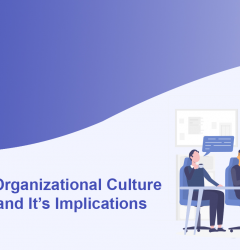01 Jun

Bright ideas don’t come as effortlessly as flicking on a light. When it’s up to one person to dream up an arrangement, it can be time-consuming and cause a part of the weight. And when it comes to a group of individuals entrusted with fathoming an issue, thoughts might clash.
Not to specify, everybody features a favored method for their inventive franticness, making it difficult to induce each group members’ wheels to turn within the same direction. That’s where these effective brainstorming techniques come in. These methods give structure for these effective brainstorming techniques, touch off imagination over all brainstormers, and guarantee your thoughts come to fulfillment. And fortunately, there are parts of these effective brainstorming techniques to select from.
Consider the following methods—and perhaps a group brainstorm template—for your another planned session or at whatever point motivation strikes. Although some of the time, the brightest ideas come within the dark.
Table of Contents
What is Brainstorming?
The brainstorming technique is basically for generating ideas and exchanging information to solve a specific commercial or technical challenge in which participants are allowed to think freely. The brainstorming technique is a group exercise in which each member expresses their ideas as they arise. At the end of the session, ideas are classified and prioritized for further action.
When organizing an effective brainstorming technique, it is critical to specify precisely the topic to be discussed. A topic that is too specialized might constrain thought, whereas a topic that is too broad will not create enough immediately applicable ideas. The composition of the brainstorming group is also significant. It should include those who have a direct connection to the issue as well as those who can bring unique and surprising insights. It might be made up of employees from within or outside the organization.
There are various brainstorming ‘rules’ that must be followed to enable a good session in which everyone present contributes.
- Encourage fresh and original ideas, no matter how strange they may look at first.
- Because quantity is more essential than quality, ideas are not debated or critiqued in detail when they are presented to the group; this is kept for a later stage.
- Build on the suggestions of others.
- Every individual and every idea is equal in value.
- Each produced concept belongs to the group rather than the individual who came up with it.
A facilitator explains the topic and the above ‘rules’ during an effective brainstorming technique session. The group then starts generating and sharing ideas. These are documented on whiteboards, flipcharts, Post-it® notes, and so forth. This portion of the meeting should not take more than thirty or forty minutes. The group then categorizes and ranks the ideas. The conference concludes with an agreement on the next steps.
Following that, the ideas should be more explicitly collected and shared with the group for review. Electronic mind-maps are especially effective in this situation since they help see how the thoughts interrelate. The ideas are more readily reviewed and prioritized for action after they have been categorized and mapped.
Brainstorming Challenges

An effective brainstorming technique’s golden rule is quantity over quality. You are more likely to succeed if you have a lot of ideas. Therefore, ensure that all members of the team, especially in an effective brainstorming technique session, leave their criticisms at the door and remember that no idea is bad.
Some effective brainstorming techniques will go smoothly, and some will not. Categorized there are several common brainstorming challenges:
- Unbalanced debates, sometimes as a result of extroverts dominating discussions
- The anchoring effect, which occurs when brainstormers hold to the initial few ideas given and do not go on to others.
- Awkward silences, which frequently occur when individuals are unprepared
Perhaps you’ve had some of these awkward brainstorming sessions yourself. Fortunately, there are several tried-and-true, as well as some unconventional brainstorming techniques and tools that address exactly these challenges.
Analytic Brainstorming Techniques
Analytic brainstorming techniques may be useful when you need to examine an idea from all sides or thoroughly analyze a problem. Consider the brainstorming methods and tools listed below to produce and qualify ideas.
1. Starbursting
Starbursting is a visual effective brainstorming technique that should be utilized once you or your brainstorming team has narrowed in on a single concept. To begin, place an idea in the center of a whiteboard and draw a six-point star around it. Each point will stand in for a question:
- Who?
- How?
- Where?
- What?
- Why?
- When?
Consider each question and how it relates to your concept, such as “Who will want to buy this product?” alternatively, “When do we need to start this program?” This will allow you to evaluate eventualities or impediments that you had not previously considered.
2. SWOT Analysis
SWOT analysis may be one of the most effective brainstorming techniques known to you as it relates to strategic planning, but you may be shocked to learn that this concept can also be used as a brainstorming exercise to help qualify an idea. What is the idea? Discuss the following features of your issue to see if it’s worth pursuing:
- Strengths: how does the concept dominate or differentiate itself from competitors?
- Weakness: Are there any weaknesses in the concept that might compromise its implementation?
- Opportunities: What else can you do with this concept?
- Threats: what are the potential drawbacks that might occur if the proposal is implemented?
3. Mind Mapping
Mind mapping, another visual effective brainstorming technique that tackles the anchoring effect, is a typical brainstorming difficulty in which brainstormers dwell on the first ideas rather than coming up with fresh ones. Mind mapping does this by allowing the original thought to stimulate subsequent ideas.
To perform this, you’ll need a large sheet of paper or a whiteboard. Begin by jotting out a theme and then linking tangential thoughts to it using lines. This essentially assists you in painting a picture of the issue at hand and what could affect or perhaps speed its implementation.
4. Gap Filling (Gap Analysis)
When you’re stuck on how to put an idea into action, gap filler comes in handy to solve the roadblocks. Begin with a declaration of where you are, followed by a statement of where you wish to go. “Our firm makes smartwatches; we want to broaden our offering to include fitness trackers,” for example.
It’s a good idea to write things down on a large piece of paper or a whiteboard for all of your brainstormers to see, maybe utilizing a flowchart or mind map. Then, make a list of the barriers that are keeping you from achieving where you want to go and work through solutions for each one.
Roleplay Brainstorming Techniques
Drama buffs, rejoice! These roleplay brainstorming approaches urge brainstormers to symbolically walk in someone else’s shoes or put on their hat—or six hats, in one case—to solve an issue or come up with fresh ideas. What’s another advantage to this? When brainstormers adopt a personality that is not their own, it decreases inhibitions because it is technically not their point of view that is being presented to the table.
1. Reverse Brainstorming
The foundation of reverse brainstorming is a small amount of chaos. It invites brainstormers to take on the role of disruptors by first brainstorming issues and then solutions. A team leader will frequently begin the brainstorming questions by asking, “How do we cause [insert problem]?”
Once your team has identified the root reasons, they will have a fresh perspective on issue solving.
2. Role Storming
Role storming is similar to figure storming in that brainstormers adopt different characters to generate ideas, but there is one major difference: brainstormers play out those ideas.
In general, brainstormers are asked to play the position of an ordinary person who will be affected by the idea or solution in question, whether that’s an employee, client, or another party, and they act out a situation that may develop from the concept to help them interpret what difficulties may occur. Consider this brainstorming strategy for more outgoing groups.
3. Reverse Thinking
Reverse thinking is a cross between figure storming and the six thinking caps effective brainstorming techniques. It simply asks brainstormers, “What would someone else do in this situation?” Then it pushes readers to consider why that person’s approach might work or not, as well as whether your present solution is more successful.
Quiet Brainstorming Techniques
These silent and effective brainstorming techniques are ideal for time-crunched enterprises or teams with more introverted members since they allow brainstormers to submit ideas on their own time and frequently anonymously. Look to the ways listed below to get your creative juices flowing, especially if you work on a remote team with regular virtual meetings.
1. Collaborative Brainwriting
Think of collaborative brainwriting as a herd of cows grazing in a pasture, only instead of cows, it’s brainstormers grazing on ideas for a week, anonymously scribbling down thoughts or ideas. A brainstorming facilitator will frequently start this approach by displaying a big sheet of paper, sticky notes, or sharing a cloud-based document to write down some brainstorming ideas.
Team members can then expand on those ideas on their own time and offer anonymous feedback. Set a clear timetable for when the brainstorming session will end to ensure that all brainstormers have an opportunity to contribute.
2. Brainwriting (Slip Writing)
Brainwriting, a nonverbal and in-person effective brainstorming technique, tackles the brainstorming difficulty of imbalanced interactions front-on. This is due to the fact that it needs involvement and coordination from all brainstormers, beginning with each participant penning down three thoughts related to a topic on three distinct pieces of paper. Then, everyone passes their ideas to the right or left, and their neighbor expands on them by adding bullet points and concerns.
The slips of paper are handed around the table until they have gone all the way around. The brainstorm facilitator can then digest all of the ideas, or the brainstormers can debate each concept aloud and decide which ones are worth pursuing.
3. SCAMPER
The SCAMPER, an effective brainstorming technique, allows brainstormers to examine an idea from several perspectives, and its acronym serves as inspiration for each lens:
- Substitute: Consider what would happen if you switched one aspect of a solution for another.
- Combine: Consider what would happen if one aspect of a solution was paired with another.
- Adapt: Consider how you may adapt a concept or solution to a new situation.
- Eliminate: Consider what you might cut from the idea or solution to make it simpler.
- Reverse effective: Finally, think about how you may restructure a concept to make it more effective.
- Put to another use: Consider how you might be able to expand on your concept in other ways.
- Modify: Consider how you can improve a concept to make it more powerful.
When utilized in a group brainstorming session, you may wish to use templates to log replies or combine the SCAMPER approach with a brainwriting session to encourage all brainstormers to assess ideas from various perspectives.
Group Brainstorming Techniques
Most of the effective brainstorming techniques may be used in groups of brainstormers, but these specialized and effective brainstorming techniques encourage (and in some cases, demand) everyone to participate. Group of effective brainstorming techniques, when properly guided, not only generate more ideas but they may also:
- Increase team morale by playing humorous brainstorming games and involving participants in all stages of the brainstorming process.
- Encourage creative thinking, particularly when brainstormers are given time to develop their ideas and an organized approach to issue solving.
- Bring more different ideas together as a result of each brainstormer’s distinct perspective and individual abilities.
1. Rapid Ideation
The fast ideation of effective brainstorming techniques pushes brainstormers to race against the clock and come up with as many ideas as possible—while not taking themselves too seriously. It’s ideal for teams who get diverted or have problems remaining focused in meetings. This may be accomplished by having brainstormers either yell out ideas to a facilitator or write them down on a piece of paper. You may notice that some of the same ideas keep coming up, which indicates that they are likely worth exploring.
2. Eidetic Image Method
The eidetic image approach is based on setting goals, and it begins with everyone in the group closing their eyes to do so. For example, if a corporation wants to create a new wristwatch, the brainstorming facilitator might urge all brainstormers to close their eyes and quietly reflect on what smartwatches now look like.
The group would then discuss, shut their eyes, and quietly envision additional functions to add to the gadget. They’d all open their eyes again and talk about it, basically stacking on the potential for improving a product. This kind of brainstorming is perfect for enhancing or expanding an existing product or service.
3. Charrette
You may want to reserve a couple of and rooms for this one. The charette, an effective brainstorming technique, divides an issue into smaller bits and divides your brainstormers into different teams to handle them.
For example, you might set aside three rooms, put a topic or problem on a whiteboard, and have three groups of brainstormers enter those rooms to scribble down their thoughts. The groups of brainstormers then rotate rooms and expand on the ideas of the group that came before them. Consider it the pinnacle of good collaboration.
Other Effective Brainstorming Techniques
Consider adding some of these effective brainstorming techniques to your arsenal of ways to ideate for more unique approaches to getting your individual or team’s wheels moving.
1. Random Word Picker
It’s no secret that your team’s physical environment may have an influence on their workflow and even their creativity. When your brainstorming session becomes stagnant, consider moving it to a different venue, such as a park, a strolling meeting, or even a coffee shop.
Being in a new environment may spark fresh ideas and even loosen up your brainstormers, making them more receptive to discussing ideas and assisting you in achieving quantity over quality.
2. ‘What if’ Brainstorming
“What if” brainstorming is an extremely spontaneous also an effective brainstorming technique that involves asking as many “what if” questions about a topic as possible, akin to the rapid ideation brainstorming process. For example, “what if this problem happened in another country?” or “what if this problem happened in the 1800s?”
Walking through the scenarios may help you identify new hurdles to your problem. Essentially, the “what if” effective brainstorming technique assists your team in evaluating all possible outcomes.
3. Storyboarding
It turns out that storyboarding isn’t just for television and movies. This may also be used as a most effective brainstorming technique, showing or drawing an issue and potential solutions. Consider it another approach to put oneself in the shoes of others, particularly those who will be impacted by your answer. It’s also a good way to picture any problems that may arise while putting a plan into action.
Wrapping It Up
Effective Brainstorming techniques are an excellent method for producing ideas, coming up with alternatives and possibilities, identifying catastrophic faults, and establishing new techniques. However, it is only as good as the participants and facilitator. The better you are at choosing people, establishing the stage, and stimulating debate, the better your results will be.
No matter how well you prepare, distractions, personality disputes, nervousness, or plain boredom may all come in the way of good brainstorming. When that happens, you’ll be pleased you have a collection of terrific ideas to help you move the process forward!
Frequently Asked Questions (FAQs)
1. How do you lead an effective brainstorming technique session?
- Define the problem. The first step should be to determine a problem question that the effective brainstorming technique session will address
- Layout the context and definitions
- Pick an appropriate facilitator
- Invite the right people
- Set the agenda
- Holding the session
2. What do you need to do after you finish brainstorming?
After an effective brainstorming technique session, let each participant take a turn explaining their idea to the team at large. For context, encourage them to explain the current problem or situation and how the very concept or solution they propose corrects or improves upon it.












Himani